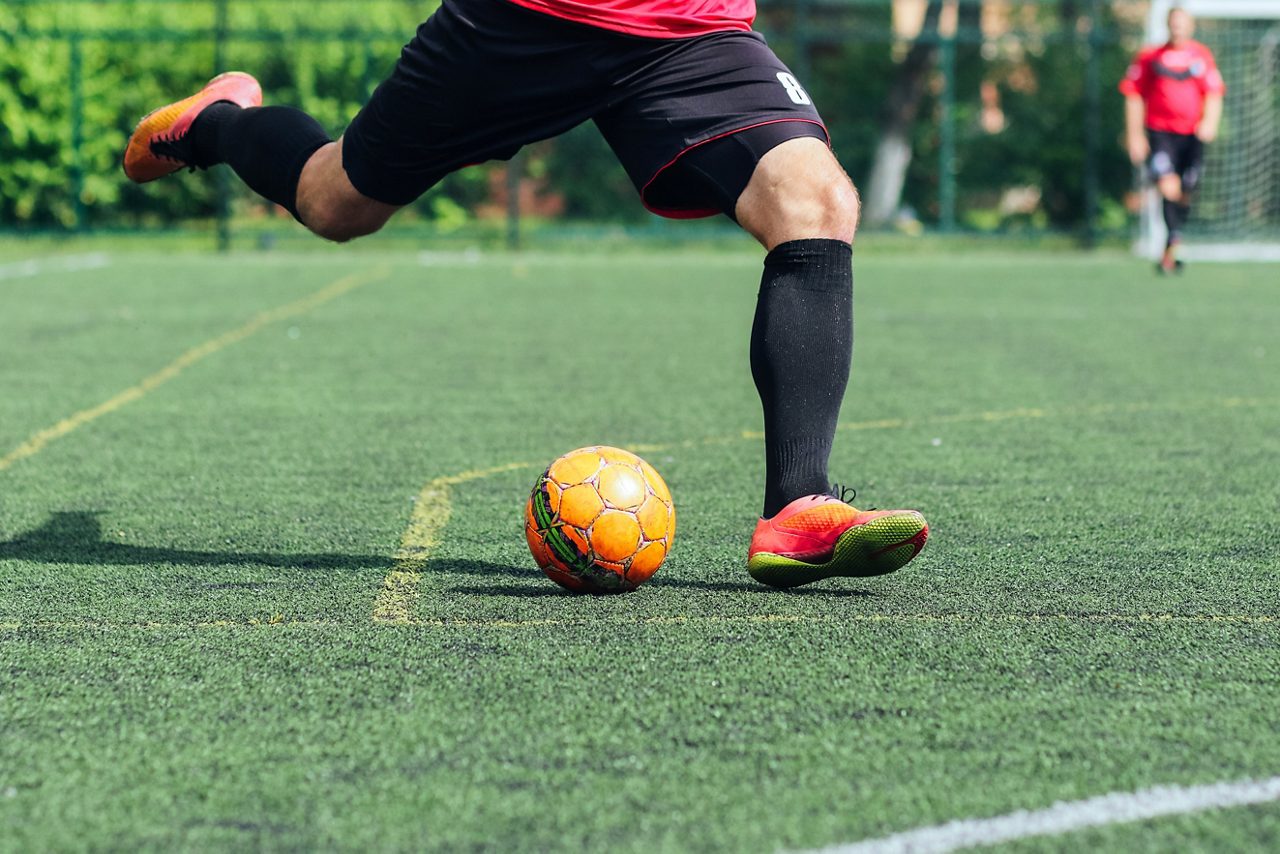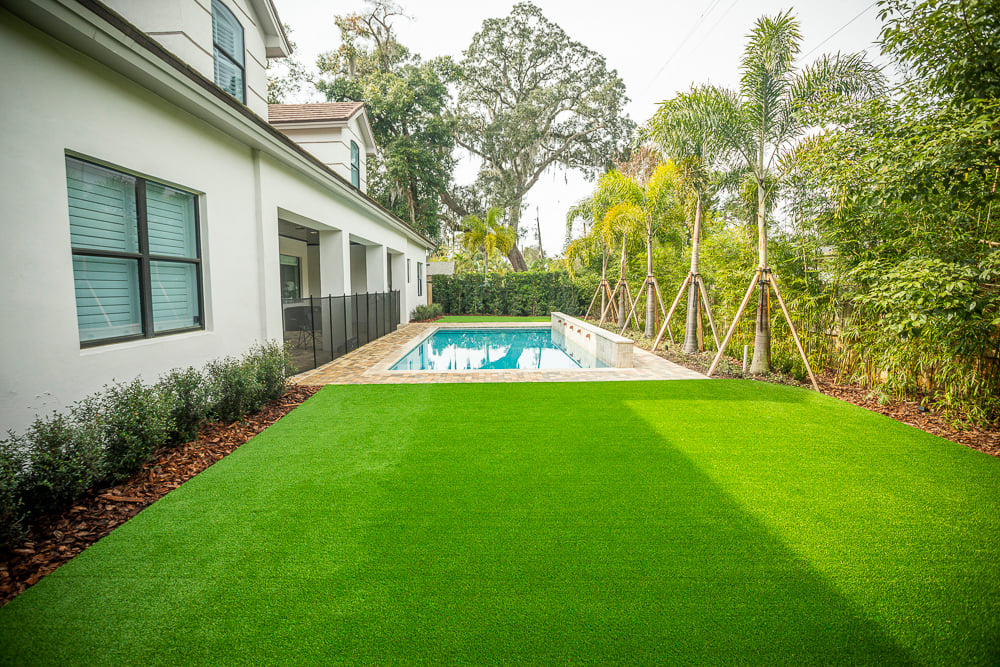Leading Phoenix Turf Companies Offering Premium Synthetic Grass Options
Explore the Environmental Perks of Opting for Synthetic Grass Solutions
The adoption of synthetic grass services presents an engaging opportunity to attend to pushing environmental challenges. By significantly lowering water usage and minimizing the application of unsafe chemicals, these options not only advertise sustainable landscape design but additionally safeguard neighborhood environments. The reduced carbon footprint connected with lowered maintenance tasks adds to a much more lasting method to land administration. However, the ramifications of these advantages prolong past mere preservation initiatives, questioning concerning their long-term influence on environment conservation and overall environmental equilibrium. Discovering these measurements reveals a complicated interplay worth taking into consideration.
Water Preservation Conveniences
Among one of the most considerable benefits of man-made grass is its capability to save water. Conventional turf lawns require substantial watering, specifically in locations susceptible to drought or water restrictions. On the other hand, artificial lawn does not require watering, substantially minimizing the overall demand for water resources. This attribute is especially valuable in deserts where water scarcity is a pushing worry.
By getting rid of the need for normal watering, synthetic lawn adds to sustainable landscape techniques and assists reduce the environmental influence of too much water consumption. The preservation of water prolongs to the reduction of runoff, which can lead to dirt erosion and river pollution.
Furthermore, the setup of synthetic grass permits towns and house owners to allot water sources more effectively, concentrating on crucial usages such as drinking water and farming. The change in the direction of synthetic grass not just advertises liable water use yet also aligns with broader environmental goals aimed at protecting natural deposits.
As areas significantly prioritize sustainability, the water conservation benefits of synthetic grass provide an engaging instance for its fostering in household and business landscape design jobs.
Lowered Chemical Use
The transition to synthetic grass substantially decreases the dependence on chemical therapies commonly used in all-natural turf upkeep. Conventional turf management typically includes the application of fertilizers, herbicides, and chemicals to advertise development and control parasites. These chemicals can position dangers to human health, neighborhood wild animals, and the setting, contributing to dirt and water contamination.
In comparison, fabricated turf eliminates the need for these damaging substances. By reducing the launch of synthetic compounds into the community, man-made turf promotes healthier dirt and water systems.
In addition, the absence of chemical runoff associated with artificial turf installments helps secure neighborhood waterways from contamination, sustaining aquatic life and preserving biodiversity. Arizona artificial turf. As communities progressively focus on lasting techniques, selecting synthetic grass offers a viable service that lines up with ecological conservation objectives. Via this shift, residential or commercial property proprietors can appreciate lavish green spaces without compromising environmental health and wellness, leading the method for a much more lasting future
Reduced Carbon Impact

Moreover, the installment of artificial turf can result in considerable water preservation. All-natural grass call for substantial quantities of water for watering, which not just contributes to the carbon impact connected with water extraction and therapy but also strains local water resources. On the other hand, synthetic grass needs minimal maintenance, requiring no watering, thereby dramatically decreasing water use and its connected power prices.
Additionally, the longevity of man-made grass adds to its decreased carbon effect. With a lifespan of up to 15 years or more, the demand for constant replacements is decreased, resulting in less waste and reduced power usage in manufacturing and getting rid of conventional turf alternatives. Overall, fabricated lawn provides a sustainable alternative for eco mindful landscaping.
Environment Preservation
Habitat conservation is an important consideration in the debate over landscape design choices, specifically when contrasting man-made grass to natural yard. All-natural yard yards typically require considerable maintenance, consisting of making use of herbicides, pesticides, and plant foods, which can adversely affect local ecosystems. These chemicals can seep right into the soil and rivers, harming indigenous flora and animals and interfering with regional environments.
Fabricated lawn removes the need for hazardous chemicals, thus safeguarding close-by wildlife and maintaining the integrity of surrounding ecosystems. The installation of artificial turf can lead to the conversion of previous yard locations right into even more biodiverse landscapes, such as pollinator gardens or native plant areas, which can more sustain neighborhood wild animals.
Eventually, the shift to synthetic grass not only preserves water and minimizes upkeep initiatives but additionally promotes a more harmonious relationship between human tasks and the native environment, promoting habitat preservation at the same time.
Long-Term Sustainability
Lasting sustainability is a critical element in reviewing the advantages of synthetic grass over standard turf lawns. Among the most significant advantages of man-made turf is its special info durability; it can last approximately 15-20 years with very little maintenance, whereas all-natural turf calls for regular reseeding and replacement. This long life decreases the demand for continuous resources, such as water, plant foods, and pesticides, which are crucial for preserving a healthy turf lawn.
Furthermore, synthetic grass contributes to a decrease in carbon emissions linked with yard treatment equipment. Typical lawns usually need gas-powered lawn mowers, trimmers, and blowers, all of which add to air pollution. Arizona artificial turf. In contrast, synthetic grass gets rid of the requirement for such equipment, promoting a cleaner atmosphere
Moreover, the production of man-made lawn progressively uses recycled products, enhancing its sustainability profile. As suppliers adopt environmentally friendly techniques, the environmental impact of synthetic grass continues to diminish.

Verdict
The adoption of synthetic grass services offers considerable environmental benefits, including significant water preservation, decreased reliance on hazardous chemicals, and a reduced carbon footprint. Fabricated turf help in maintaining natural environments by minimizing land disturbance and advertising long-term sustainability with the usage of durable materials. Jointly, these factors highlight the possibility of synthetic grass to add positively to ecological health and offer a feasible alternative to standard reference landscape design practices in a progressively resource-conscious globe.
In contrast, synthetic turf does not need watering, dramatically reducing the general need for water sources. By decreasing the release of synthetic compounds into the community, man-made lawn advertises much healthier dirt and water systems.
Furthermore, the installation of synthetic grass can result in considerable water preservation. In comparison, man-made lawn needs minimal maintenance, requiring no watering, thus considerably minimizing water use and its connected energy expenses.
